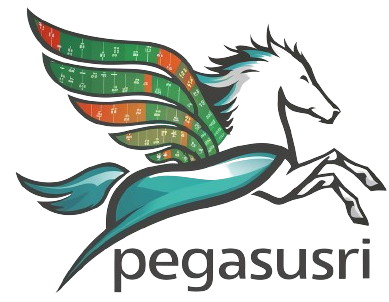Introduction to Investing $10,000
Investing $10,000 can be a significant step towards achieving your financial goals. Whether you’re saving for retirement, a down payment on a house, or building an emergency fund, smart investment strategies can help you grow your wealth over time. The key is to develop a diversified portfolio that aligns with your risk tolerance and long-term objectives.
Understanding Your Financial Goals
Before investing, it’s crucial to have a clear understanding of your financial goals. What do you hope to achieve with your investments? Are you saving for a short-term goal like a vacation or a long-term goal like retirement? Your investment timeline and the amount of risk you’re willing to take on will influence your investment choices.
Consider using a personal finance app or spreadsheet to track your income, expenses, and savings. This will give you a better sense of how much you can realistically invest each month. It’s also a good idea to have an emergency fund with 3-6 months of living expenses before investing heavily.
Assessing Your Risk Tolerance
Your risk tolerance is another key factor in determining your investment strategy. Are you comfortable with the ups and downs of the stock market or do you prefer more stable, predictable returns? Generally, younger investors can afford to take on more risk since they have a longer investment horizon to ride out market fluctuations.
There are many online questionnaires and tools that can help you assess your risk tolerance. A financial planning professional can also provide guidance based on your unique circumstances. Keep in mind that taking on too much or too little risk can hinder your ability to reach your goals.
Diversifying Your Investment Portfolio
One of the most important principles of how to invest 10k successfully is diversification. Spreading your money across different asset classes, sectors, and geographies can help mitigate risk and optimize returns. A well-rounded portfolio might include a mix of stocks, bonds, real estate, and cash equivalents.
Investing in Stocks and Bonds
Stocks represent ownership in a company and have the potential for capital appreciation and income through dividends. However, they also come with higher volatility. Bonds are debt securities that provide steady interest payments but lower overall returns. The appropriate mix of stocks and bonds will depend on your goals and risk profile.
For hands-off investors, index funds and ETFs (exchange-traded funds) offer broad exposure to the market at a low cost. Actively managed mutual funds are another option, though they tend to have higher fees. It’s important to research any investment thoroughly before committing your money.
Exploring Real Estate Investments
Real estate investment is another way to diversify your portfolio and potentially earn passive income. With $10,000, you likely won’t be able to buy a rental property outright, but there are other options:
- Real Estate Investment Trusts (REITs) – Companies that own and operate income-generating properties. They trade like stocks on exchanges.
- Crowdfunding Platforms – Allow you to invest in a portion of a property or development project with a group of other investors.
- House Hacking – Buying a small multi-unit property, living in one unit, and renting out the others to offset your mortgage.
Real estate can offer long-term growth and hedge against inflation, but it also comes with risks like vacancies, repairs, and market downturns. As with any investment, due diligence is essential.
Mutual Funds and ETFs
For many investors, especially beginners, mutual funds and ETFs are an easy way to build a diversified portfolio. They allow you to invest in a basket of securities (stocks, bonds, or a combination) with a single transaction.
Mutual funds are actively managed by professional fund managers who aim to beat market returns. ETFs usually track a particular index and have lower fees. Both offer exposure to a wide range of assets and can be tailored to your risk tolerance (e.g., aggressive growth vs. conservative income).
Utilizing Modern Investment Tools
Technology has made how to invest 10k more accessible than ever. With a few clicks or taps, you can open an investment account, choose your portfolio allocation, and start putting your money to work. Two popular options are robo-advisors and investment apps.
Robo-Advisors for Automated Investing
Robo-advisors are digital platforms that use algorithms to build and manage your investment portfolio. After answering some questions about your goals and risk tolerance, the robo-advisor will recommend a diversified mix of low-cost index funds or ETFs.
The main advantages of robo-advisors are low fees, ease of use, and automatic rebalancing to maintain your target asset allocation. Some popular robo-advisors include Betterment, Wealthfront, and Schwab Intelligent Portfolios. However, they may not offer the level of personalization or human guidance that a traditional financial advisor would.
Best Investment Apps
Investment apps have also proliferated in recent years, making it easy to invest from your phone. Some apps are geared towards beginners with features like fractional shares, spare change investing, and zero commissions.
Robinhood, Acorns, and Stash are a few examples of popular investment apps. While these apps can be a good starting point, be aware of their limitations. They may encourage frequent trading or fail to help you see the big picture of your financial performance. As your portfolio grows, you may want to graduate to a more comprehensive investing platform.
Strategic Long-Term Investments
In addition to your core portfolio of stocks, bonds, and real estate, consider long-term investments as you develop your strategy how to invest 10k. Two key areas to focus on are retirement accounts and building an emergency fund.
Retirement Accounts and Tax Advantages
If you haven’t already, opening a retirement account like a 401(k) or IRA should be a top priority. These accounts offer significant tax advantages that can boost your returns over time. With a traditional IRA or 401(k), your contributions are tax-deductible and grow tax-deferred until withdrawal. Roth versions are funded with post-tax dollars but offer tax-free growth and withdrawals in retirement.
Aim to contribute at least enough to your 401(k) to receive any employer match, which is essentially free money. For 2023, you can contribute up to $22,500 to a 401(k) and $6,500 to an IRA (with an additional $1,000 catch-up contribution if you’re over 50).
Building an Emergency Fund
Although not an investment per se, having an emergency fund is a crucial part of any financial safety net. This is money set aside in a savings account to cover unexpected expenses like a job loss, medical bills, or car repairs. Aim to save at least 3-6 months’ worth of essential living expenses.
Without an emergency fund, you may be forced to tap into your investments at an inopportune time, such as during a market downturn. This can derail your long-term financial plans. Make sure you have adequate cash reserves before investing aggressively.
Advanced Investment Strategies
As you gain experience and confidence investing, you may want to explore more advanced strategies. Three approaches to consider are dollar-cost averaging, peer-to-peer lending, and cryptocurrency. Each comes with its own set of risks and rewards.
Dollar-Cost Averaging
Dollar-cost averaging (DCA) involves investing a fixed amount of money at regular intervals, regardless of market conditions. For example, you might invest $500 every month into a diversified portfolio. The idea is that you end up buying more shares when prices are low and fewer shares when prices are high, thus mitigating the impact of market volatility.
DCA can be a helpful investment strategy for those who are risk-averse or prone to timing the market. It ensures that you continue investing consistently, even during downturns. However, it may lead to lower overall returns compared to lump sum investing in a rising market.
Exploring Peer-to-Peer Lending
Peer-to-peer (P2P) lending platforms allow you to earn interest by lending money directly to individuals or businesses. Borrowers are typically assigned a risk grade based on their credit profile, with higher-risk loans offering higher interest rates.
P2P lending can offer attractive yields and serve as a form of alternative income. However, there are risks of borrower default and platform failure. Diversifying across many loans and only investing money you can afford to lose are wise investment strategies for this asset class.
Cryptocurrency: High Risk, High Reward
Cryptocurrency has gained mainstream attention in recent years as a speculative high-risk investment. Proponents view crypto as a hedge against inflation and a way to diversify beyond traditional asset classes. Critics warn of extreme volatility, regulatory uncertainty, and the potential for fraud or manipulation.
For those just learning how to invest 10k, it’s advisable to limit crypto to a small portion of your overall portfolio. Stick to well-established coins like Bitcoin or Ethereum and use a reputable exchange. As with any investment, thoroughly research the risks and don’t invest more than you can afford to lose.
Continuous Learning and Seeking Advice
Successful investing requires ongoing education and adaptation. As you build your portfolio, make a commitment to stay informed about market trends and continuously improve your financial literacy. At the same time, don’t hesitate to seek professional advice when needed.
Staying Updated with Market Trends
The financial landscape is constantly evolving, with new products, technologies, and economic conditions emerging all the time. To be a successful investor, you need to stay on top of key market trends and adjust your strategies accordingly.
Make a habit of reading financial news, blogs, and books. Listen to investing podcasts or take an online course. The more knowledgeable you become, the better equipped you’ll be to make smart financial decisions.
Consulting Financial Advisors
While it’s empowering to take control of your own investments, there may be times when consulting a financial advisor makes sense. An advisor can provide personalized guidance based on your unique goals, risk tolerance, and tax situation. They can also help you navigate complex investment strategies or financial planning decisions.
Look for an advisor who is a fiduciary, meaning they are legally obligated to act in your best interests. Fee-only advisors tend to have fewer conflicts of interest than those who earn commissions from selling products. And make sure any potential advisor has experience with situations like yours.
Conclusion: Crafting Your Investment Plan
How to invest 10k will look different for everyone based on their unique financial goals. The key is to educate yourself, start with a solid foundation, and craft a personalized investment plan. With the right strategies, patience, and discipline, you can put your money to work and build long-term wealth.
Setting Clear Investment Goals
Begin by defining your short-term and long-term investment goals. Are you saving for a house, retirement, your kids’ education? Having specific, measurable goals will guide your financial planning and help you stay motivated.
Next, assess your risk tolerance and time horizon. Your portfolio should reflect how much volatility you’re willing to stomach and when you’ll need to access your money. A longer time horizon generally allows for more risk-taking.
Budgeting and Researching
Review your income and expenses to determine how much you can realistically invest each month. Treat your investments like any other bill and automate contributions where possible. Building consistency is key to long-term success.
Thoroughly research any potential investments, investment strategies, or advisors before committing your money. Look for low fees, transparent reporting, and a proven track record. Don’t chase “hot tips” or get-rich-quick schemes.
Taking Action and Monitoring Progress
Once you’ve laid the groundwork, it’s time to take action. Open the necessary accounts (brokerage, IRA, 401(k), etc.) and begin executing your investment plan. Consider starting with index funds or ETFs to build a diversified core portfolio, then layering in alternative assets like real estate or P2P loans.
Monitor your portfolio regularly (e.g., quarterly) but avoid obsessing over daily movements. Make adjustments as needed based on your goals, risk profile, and changing market conditions. And don’t forget to celebrate milestones along the way!
Figuring out how to invest 10k can feel overwhelming at first but know that you’re taking an important step towards building financial security. Focus on the big picture, stay disciplined, and continue educating yourself. Here’s to your journey ahead as a smart, successful investor!
See also:






